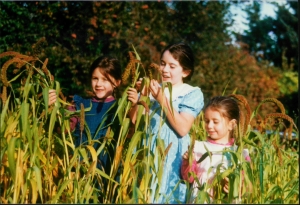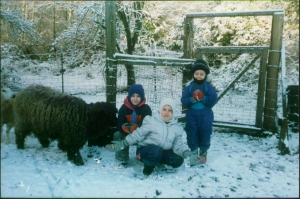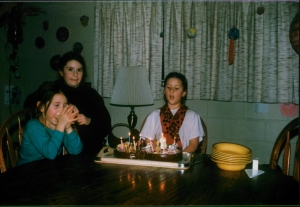Sharks on the Riverbank:
A Jersey Shore Town, its White Supremacist Past, and its Supremely White PresentThe only reminder that the Klan once flourished in Wall is the neighborhood in Glendola adjacent to Camp Evans, called Imperial Park. It never occurs to people to ask what empire the moniker refers to. I myself never thought to ask, and I was well into high school when a teacher told me. Still, apparently, people can find the Klan referenced in the title histories of various houses and plots in town.
But more people should ask about Imperial Park. Residents should ask themselves what about their town made it so desirable a destination to the KKK, but more importantly, they should ask themselves about what maybe hasn’t changed so much in eighty years. For instance, why is Wall still almost 94% white, despite bordering towns that are far more diverse?
New Jersey is the richest state per capita in the U.S. (Sometimes, it’s the second-richest, as Connecticut overtakes it, depending on the year.) Yet, New Jersey is a place of stark class contrasts. On one hand you have the wealthy bedroom communities outside of New York and Philadelphia; on the other you have nearby cities like Camden and Paterson, where crime rates are some of the worst in the country and the cities no longer have the industrial strength that helped to build up the urban areas in the first place. Similarly, the town borders on the Shore are often bold lines of racial and economic demarcation.
Wall is not an exceedingly wealthy town, but it is in the top third in per capita income in the state and close to the top quartile, which makes it fairly well-off, especially when compared to the rest of the country. People there are pretty comfortable on the whole. They have lawns. They have pools. They have a solid Little League team. They play soccer in the fall. They have Ann Taylor and Gap. Crime rates are low. Like a lot of suburban towns, it’s also racially homogenous. Diversity is measured in terms of whether you’re a Yankees fan or a Mets fan.
A lot of this is inherent to suburban life in Monmouth County. The flight to the suburbs picked up in the Sixties, Seventies, and Eighties as crime rates rose in New York and North Jersey and riots broke out in cities like Newark. But rather than address the issues of inequality and discrimination, people simply left, and they took with them the wrong kinds of lessons about city life. Rather than the material realities of the economics of crime and poverty, of the dynamics of race, class, and ghettoization, what they learned was not to live around brown people and poor people if you could at all help it. This shouldn’t be news to anyone, obviously, but the mindset still feeds into a soft form of segregation that exists in Monmouth County.
The New Jersey Supreme Court forced the state’s hand in 1975 in the case of Southern Burlington County NAACP v. Mount Laurel Township. Simply put, after a decade of appeals, municipalities in New Jersey were required to allocate funds to provide for low-income housing.
However, the construction of low-income housing does little to diminish the reputation that Wall has built for itself in surrounding communities. After all, residents of nearby towns still refer to my hometown as “White Wall.” It still maintains an atmosphere in which it’s not uncommon to hear people casually toss out various racial epithets (of both the well-known and more local varieties) without the slightest hint of embarrassment. The reputation is bad enough that when I used to go play pickup basketball in the neighboring towns of Belmar and Neptune, other players used to tell me outright that they went miles out of their way to avoid doing errands or even driving in Wall, where people stared or looked down and clutched purses and felt for wallets and where they were the targets of police looking to pull someone over.
But unlike in 1925, you’re probably not going to hear many residents admit to not liking brown people. Plus, these days, people are pretty cool with Catholics and Jews for the most part; the Irish and Italians and Poles have been welcomed into the fold. Few residents are going to support actions that explicitly try to uproot people from their homes and livelihoods. Instead, there is a less honest form of segregation. One result of the was the creation of the Council on Affordable Housing (COAH), which oversees state funding to towns for developing low-income housing. (Governor Christie tried to disband COAH, which you should remember next time someone tells you he’s only a fiscal Republican.) If towns don’t use the money, the state revokes it. Wall, feeling no compulsion to pass on free money, greenlit the development of a neighborhood called the The Mews at Collingwood Park. The problem is that, while somewhat bucolic, the mostly minority development is tucked away in a corner of town that protrudes so far out on the northwest edge that it’s barely clear that you’re still even in Wall. Few even knew the development was going up when it happened. Many still don’t know it’s there. Which, I suppose, is the point.
But this sort of thing happens all over. In 2016, Wall isn’t all that different from a lot of places. This is how suburban towns work, and the subtle maintenance of whiteness can be as toxic as whatever Hazmat-contaminated the soil around Camp Evans. Towns like Wall normalize racist exclusion, a large part of which is the fact that no one actually sees him- or herself as racist. Instead, people used the word “realistic.” It is the absolving phrase, because people are simply speaking Hard Truths about the world—unpleasant, perhaps, but The Way Things Are. And that’s the insidiousness of it, the self-denial of suburban chauvinism in this century, the way it both distorts and privileges its own reality, the way it denies how things got to be the way they are.
As a sane person of at least mildly below-average intelligence, it’s easy now to look at the KKK and tell yourself that they’re racist and wrong. Of course they are. The KKK, from its Reconstruction founding to its present-day remnants, is self-evidently evil and stupid. Their beliefs and actions don’t make it hard for the average person to feel morally superior. Similarly, it’s easy to watch The Help and sympathize with the eponymous victims. It’s easy to watch South Carolina on the news and shake your head and talk about how backward that state is. These are easy targets. What’s harder but more honest is recognizing that what the Confederate flag or the Klan hood represents is not just a Southern problem and that none of us get to opt out of history.







